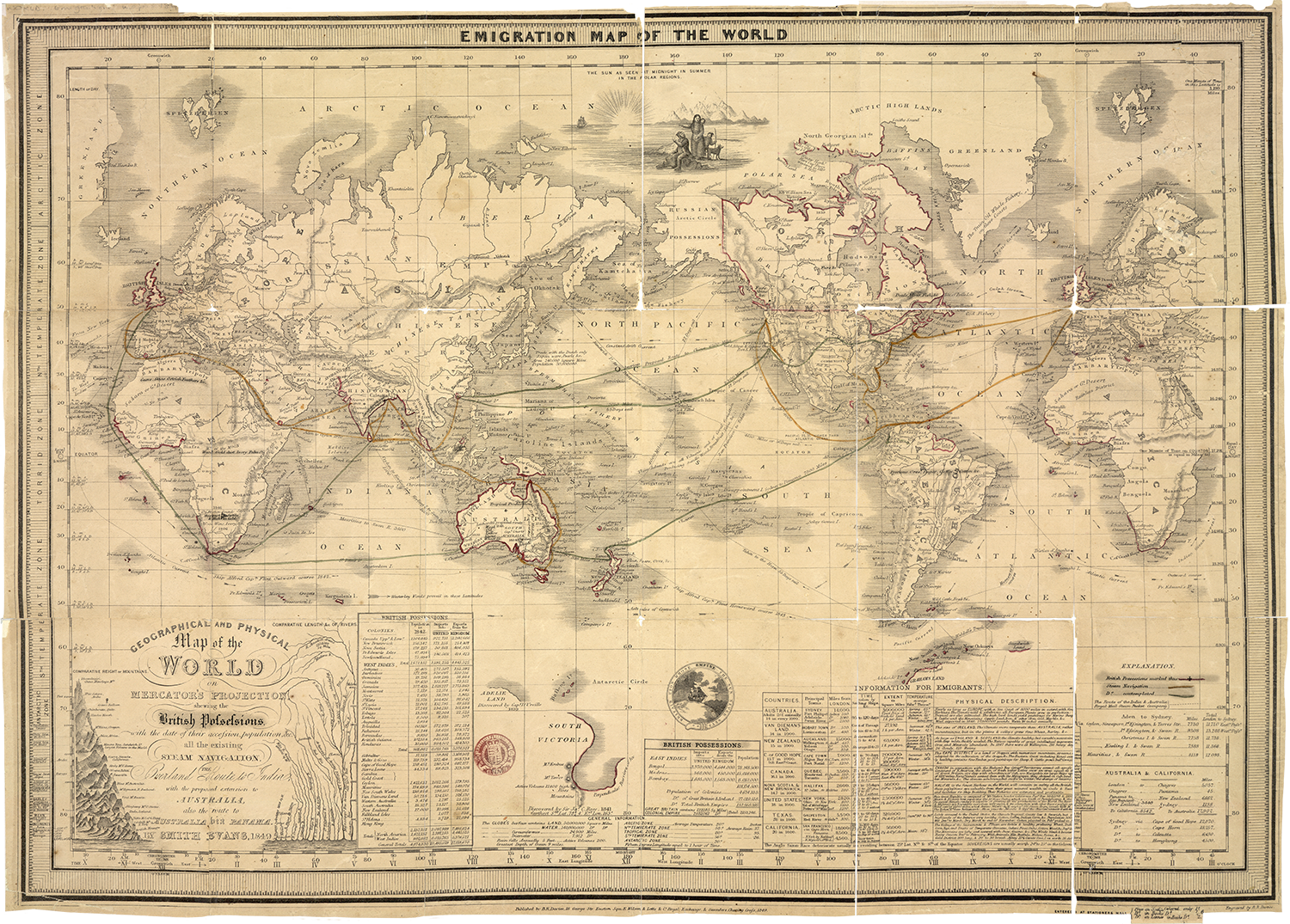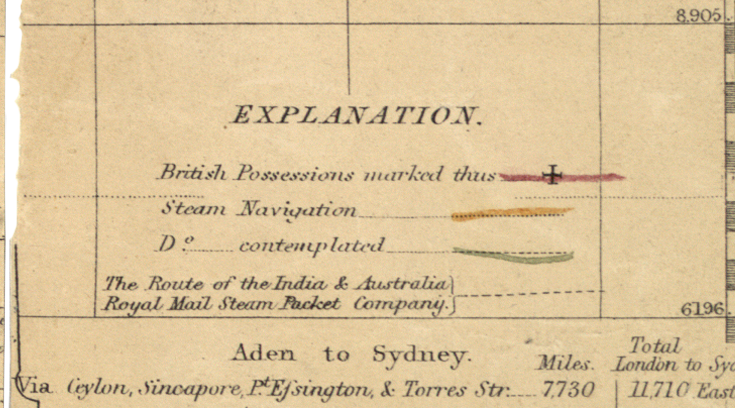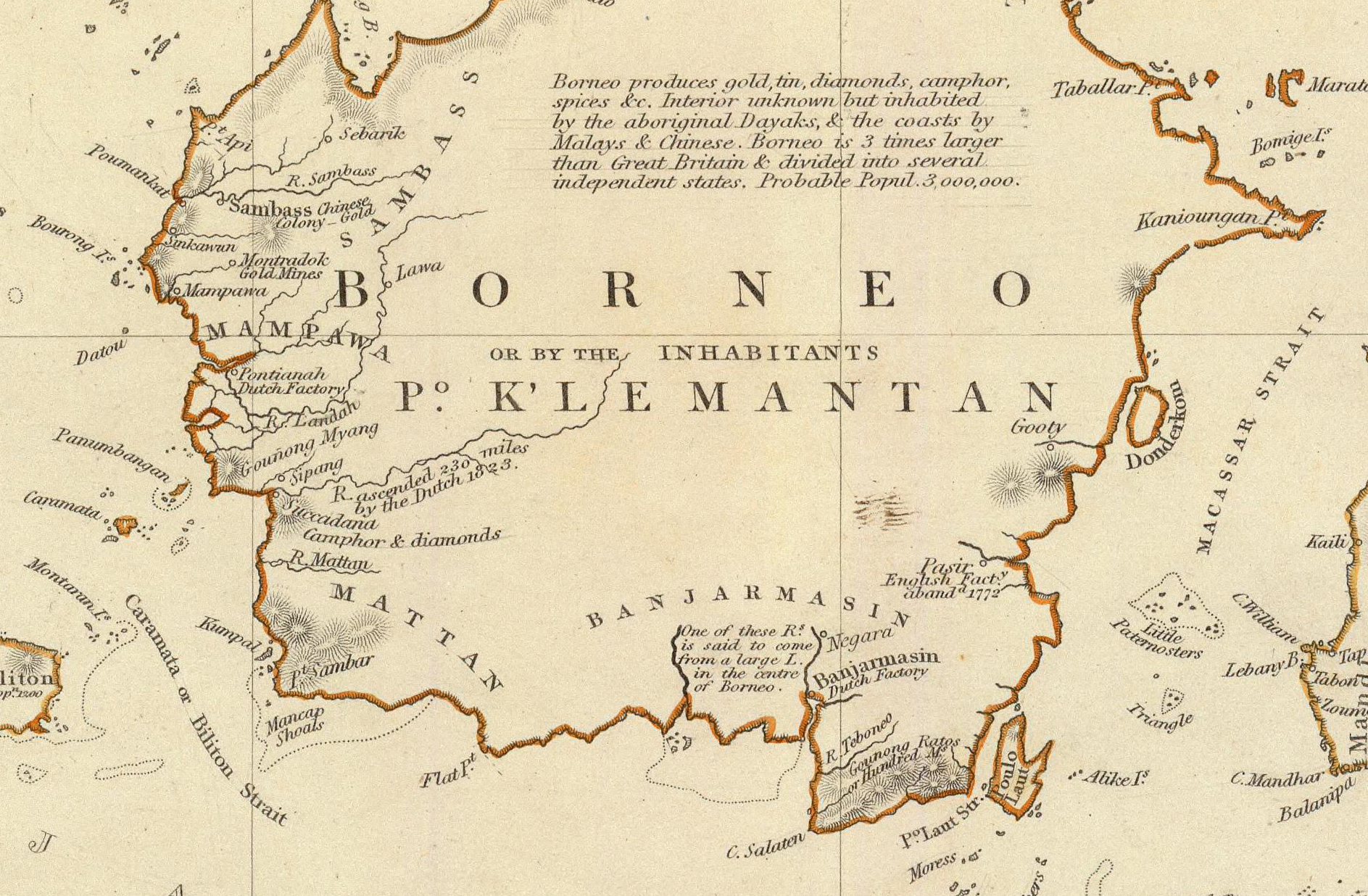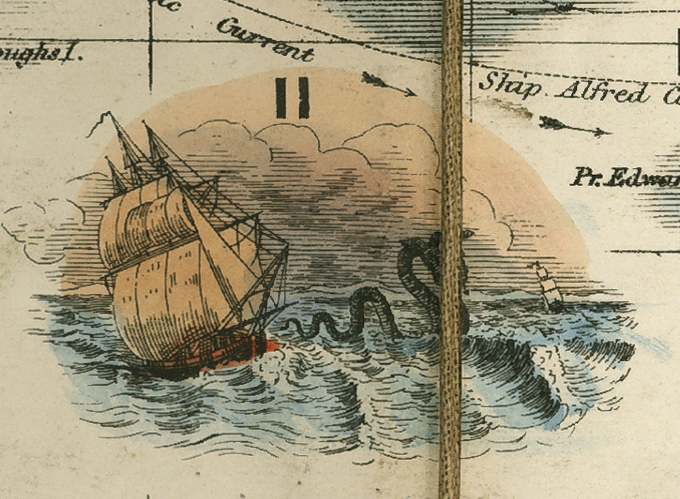A Tour of the Emigration Map of the World
March 2020

Public domain

I encountered this map in the British Library archives while researching for a different project a couple of years ago. It depicts existing and proposed steamship routes, British “possessions”, their date when they came into Britain’s “possession”, statistics on their respective populations and the resources on that land that Britain sought to possess.
This map reminded me of another one I found shortly before of Southeast Asia. These maps are typical of definitely framed the land they depict through a colonial lens. The map of Southeast Asia in particular shows not only the resources, but information of native sovereignty of that land and colonies of rival European states as potential competition for these “possessions”.
This map reminded me of another one I found shortly before of Southeast Asia. These maps are typical of definitely framed the land they depict through a colonial lens. The map of Southeast Asia in particular shows not only the resources, but information of native sovereignty of that land and colonies of rival European states as potential competition for these “possessions”.


by Baldwin & Cradock
Public Domain
One thing I need to clarify is that the “emigrants'' that are mapped in the Emigration Map of the World are not people of colour. Don’t get me wrong. You will be able to follow the steamship routes* to reveal where people of colour where organised into indentured labour and chattel slavery across the Empire. But I think this map was intended to be a menu for white people to pick a change of scenery, or more likely survey how they could be part of a frontier of exploitation.
I guess the distinction between emigrant and slave in those days is equivalent to the racialised distinction between expatriate and immigrant today. As you can see the “information for migrants” table provides information on locations that have a large contemporary Anglo Saxon Diasporic population, with a funny detail:
*If you look closely there are many more dotted lines in addition to the ones highlighted in colour


Here is where the Anglo Saxon race usually deteriorate by the way:
![]()


I would agree that this given area has a lower concentration of the Anglo-Saxon race.
I think this map is representative of the arrogance of those who have more freedom of movement. Migration to them is representative of owning the world: of having adventures and accumulating wealth. For the migrants who are excluded from this map, migration is more complicated. This map shows the construction of white supremacy in multiple ways.
In fact this map was eventually adapted into a board game called The Crystal Palace Game. The aim of the game was to communicate the adventures and conquests of the emigrants to those who chose to stay home.
I think this map is representative of the arrogance of those who have more freedom of movement. Migration to them is representative of owning the world: of having adventures and accumulating wealth. For the migrants who are excluded from this map, migration is more complicated. This map shows the construction of white supremacy in multiple ways.
In fact this map was eventually adapted into a board game called The Crystal Palace Game. The aim of the game was to communicate the adventures and conquests of the emigrants to those who chose to stay home.
 The Crystal Palace Game. Voyage round the World; an entertaining excursion in search of knowledge, whereby geography is made easy (1855)
by Henry Smith Evans
The Crystal Palace Game. Voyage round the World; an entertaining excursion in search of knowledge, whereby geography is made easy (1855)
by Henry Smith EvansPublic domain
And of course, this game included a sea monster.
The Crystal Palace Game reminds me of this quote from Linda Tuhiwai-Smith’s Decolonising Methodologies:
Is all of this just a game to them? Do they dominate, institutionalise and exploit just for fun?*
The Crystal Palace Game reminds me of this quote from Linda Tuhiwai-Smith’s Decolonising Methodologies:
“One of the issues examined relates to the way research became institutionalised in the colonies, not just through academic disciplines, but through learned and scientific societies and scholarly networks. The transplanting of research institutions, including universities, from the imperial centres of Europe enabled local scientific interests to be organised and embedded in the colonial system. Many of the earliest local researchers were not formally ‘trained’ and were hobbyist researchers and adventurers. The significance of travellers’ tales and adventurers’ adventures is that they represented the Other to a general audience back in Europe which became fixed in the milieu of cultural ideas.”
Is all of this just a game to them? Do they dominate, institutionalise and exploit just for fun?*

*The use of the present tense is intentional btw